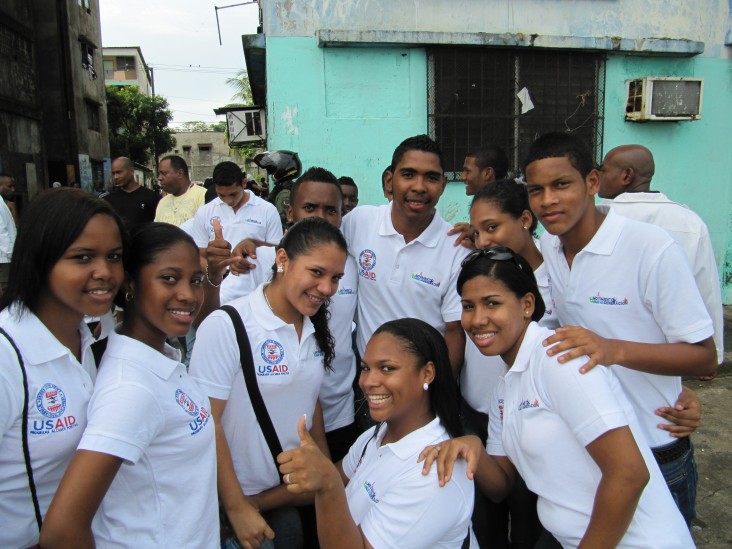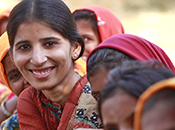- What We Do
- Agriculture and Food Security
- Democracy, Human Rights and Governance
- Democracy, Human Rights and Governance Strategy
- Supporting Free and Fair Elections
- Supporting Vibrant Civil Society & Independent Media
- Protecting Human Rights
- Promoting Accountability & Transparency
- Importance of Democracy, Human Rights, & Governance to Development
- COVID-19: Issues and Potential USAID Responses
- Countering Trafficking in Persons
- Global Labor Program
- Religious Freedom
- Youth Impact
- Economic Growth and Trade
- Education
- Environment and Global Climate Change
- Gender Equality and Women's Empowerment
- Global Health
- Humanitarian Assistance
- Transformation at USAID
- Water and Sanitation
- Working in Crises and Conflict
- U.S. Global Development Lab
Speeches Shim
Today’s youth understand and care more about development than ever before, inspired by the chance to drive meaningful change, peace and prosperity and eager to use their skills to better their communities and help those in greatest need.

Thanks to the transformative power of new technologies, young people are putting their talents to use in the field of development to drive real change--both at home and abroad. At 1.5 billion, today's global youth generation is the largest in history and USAID understands the important role youth play as partners and leaders in development.
The Strategic Imperative for Investing in Youth
Over half of the world’s population is under age 30. From USAID’s experience, we know that educated, healthy, employed and civically engaged youth drive economic growth, democracy, and prosperity. However, when we fail to effectively engage youth and address their unique needs, it can lead to violence, instability, unrest, and migration.
The Imperative
The global youth bulge, rise of violent extremism, and high global youth unemployment demonstrate the urgency to invest in youth. The 1.8 billion young people in the world today is the largest youth population in history and 90 percent of youth live in developing countries. USAID recognizes youth participation as vital to development. Young people’s full participation in development efforts can contribute to more sustainable investments to end cycles of poverty; to build resilient, democratic societies; to improve health and nutrition outcomes; and to strengthen economies. By working in partnership with the private sector, national governments, youth, and civil society, USAID youth programming can continue to build the capacity of the next generation of leaders. Young people are critical to global stability, economic growth, and development today - and in the future.
The World’s Youth
- 20% of all youth in the developing world are not in education, training, or employment
- 5 million new jobs are needed monthly to keep youth unemployment at its current high rate, twice the adult unemployment rate
- 65% of the population is under age 35, only 6% of political representatives are under 35
- 43% of the total number of homicides globally occur among youth
- 66% of young people globally do not feel their government cares about what they think
- 34% of new HIV infections globally occur among adolescents ages 15-24 whose HIV/AIDS-related deaths have not declined over the past 15 years
A Strategic Plan for Action and Investment in Youth
USAID’s vision is for educated, healthy, employed, and engaged young people who are empowered to advance their own livelihoods and the development of their countries. Our efforts focus on interventions that advance U.S. priorities and youth priorities in strategic countries across the globe.
Youth in Development Policy Objectives
- Strengthen youth programming, participation and partner ship in support of Agency development objectives.
- Mainstream and integrate youth issues and engage young people across Agency initiatives and operations.
Key Priorities for Advancing Youth as Partners in Development
- Participation/Partnerships: Strengthening Youth Leadership, Organizations and Networks.
- Programming: Promoting Positive Youth Development approach in USAID programming. Through YouthPower, USAID has invested over $400M for cross-sectoral youth programs in countries throughout the world.
- Policy: Advancing the investment in the strategic imperative of youth in development with other donors and govts, as well as advancing the evidence base on what works in youth programming in areas including youth, peace and security, youth employment and livelihoods, and health among others.
Learn more about our youth programming
See these highlights of the Agency's efforts to mainstream youth in development, carry out more effective programs, and elevate youth participation.


Comment
Make a general inquiry or suggest an improvement.